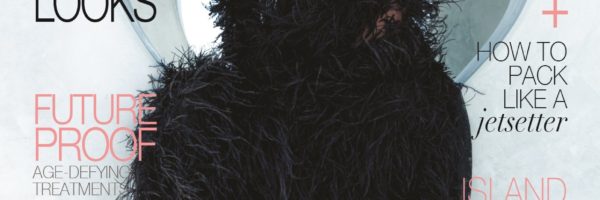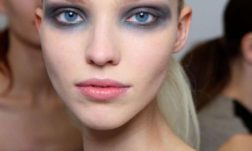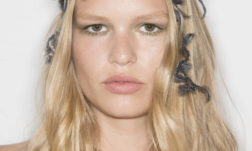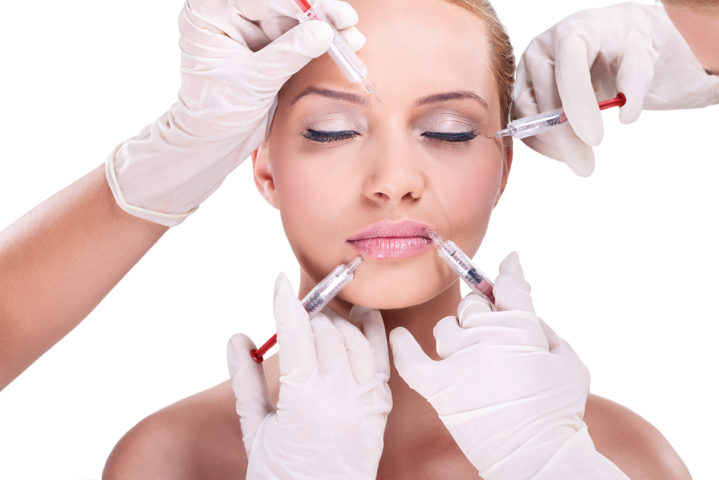
A Fine Line
First the bad news: The combination of think skin and repetitive movements (laughing, squinting) leads to fine lines, puffiness, dark circles and sagginess. Here’s the good news: You can fix it! We’ve sat down with Dr. Kate Jameson, Cosmetic Physician and the Medical Director of Youth Lab, Australia’s newest medical aesthetics clinic, on the newest approaches to repair, rejuvenate, and enhance your appearance.
How Do Cosmetic Injectables Work?
Cosmetic injectables are generally classified into dermal fillers, anti-wrinkle injections, collagen stimulators and fat dissolving injections.
Dermal fillers work by replacing lost volume, mimicking fat and bone, and by filling in lines and folds by re-volumising the skin. The most common type of dermal fillers are made of hyaluronic acid which is a naturally occurring sugar found within our skin. It is a gel which is made in different consistencies meaning we can use it in almost any part of the face – from lip enhancement, cheekbone enhancement, jawline sculpting and tear trough rejuvenation.
Anti-wrinkle injections are another type of cosmetic injectable. They are neurotoxins made from Botulinum toxin and work to prevent muscle contraction by stopping the nerve impulse to the muscle fibres. Botox has been used in medicine and cosmetics for decades. It works by freezing and relaxing facial muscles and stopping the formation of wrinkles, in skilled hands it can work to sculpt and shape the face in a natural way. Botox also has many other uses such as the treatment of migraines, teeth grinding, excess sweating and bladder overactivity to name a few.
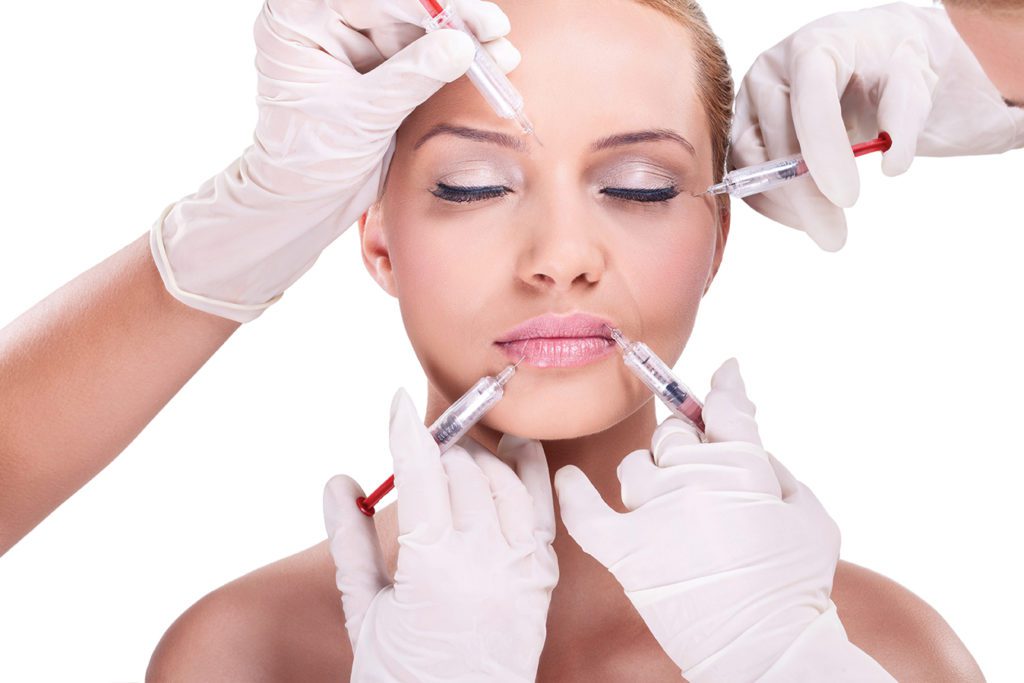
Are Cosmetic Injectables Safe?
Yes, absolutely. As dermal fillers and wrinkle relaxers are prescription medicines they go through a rigorous testing and approval process to be used by doctors. We have years of medical research to back up their safety. However the treatments are still medical procedures with some risks involved. Bruising, swelling and discomfort can occur after dermal fillers which is generally self-limiting and mild. The rarer risks include infection, immune reactions, granuloma and nodule formation, skin death or necrosis from injecting into a blood vessel and very rarely blindness. A good cosmetic doctor will always discuss possible risks and side effects with their patient and be available at all time to manage them if they were to occur.
How Long Does A Treatment Last?
Botox injections generally last 3-4 months when used in recommended doses. Those seeking a more natural result with wrinkle softening from a lower dose will have results for 2-3 months.
Dermal fillers vary from lasting 6 months for softer fillers and up to 18 months for firmer fillers used to contour the cheeks, jawline and temples. Every patient is different though and factors such as metabolism, level of physical activity and smoking status can impact the duration of results.
Where Can I Get Cosmetic Injectables?
Cosmetic injectables should only be performed by a Cosmetic Doctor or Cosmetic Registered Nurse. I would certainly advise anybody considering treatment to avoid beauty salons or spas which do not have a full time cosmetic injector on site or do not have medical facilities. Patients should do their research and only visit a reputable cosmetic medical clinic with full time medically trained staff. Remember these are not beauty treatments.
How Much Are Cosmetic Injectables?
Prices range for all treatments. Generally you should expect to pay per unit of anti-wrinkle injections which varies according to brand (there are three brands available). Botox can cost anywhere from $10 per unit at chain clinics to over $17 at higher end, more reputable medical clinics. When you look at the cost ‘per area’ for anti-wrinkle injections the average is around $200-300 (the frown lines for example).
Dermal fillers also vary but expect to pay between $550-750 per 1ml of a high quality dermal filler. Generally when it comes to cosmetic injectables, you certainly get what you pay for!
Double chin fat dissolving injections starts at $2500 for two treatments.
What is the difference between injectable anti-wrinkle treatments and dermal fillers?
There is still a lot of confusion about the difference between anti-wrinkle treatments and dermal fillers. Many people still think Botox can give you big lips for example. Unfortunately due to the media, celebrities and older injection techniques, people still associate trout pout lips and frozen, puffy cheeks with anti-wrinkle treatments however these results are often due to dermal fillers. Basically anti-wrinkle injections are used to soften dynamic lines and stop muscle movement (which can cause wrinkles). They cannot cause an increase in volume or change the shape of the face significantly which is the role of dermal fillers.
Where are anti-wrinkle injections most often used and why?
Anti-wrinkle injections are most used in the upper face to target dynamic wrinkles which occur as a result of muscle contraction. For example in the frown; repeated movements of these muscles can result in an angry or stressed appearance, and eventually the appearance of etched in, static wrinkles. Botox can also be injected into the forehead and crow’s feet to achieve a smoother appearance and prevent the formation of wrinkles down the line. Anti-wrinkle injections can be used around the eyebrows, giving a non-surgical brow lift. In the lower face we can use anti-wrinkle injections to treat smoker’s lines, dimpled chins and down turned smiles in addition to slimming the jawline.
And what about fillers?
When dermal fillers were first introduced into cosmetic medicine they were used to imply fill in lines and folds. Now we use dermal fillers to support and add contour to facial structures as we age. We can inject fillers in certain anatomical positions where they can support the ligaments and prevent the skin from sagging, replicate bone to add structure to the face and also replace lost fat. As a result dermal fillers can give an extremely natural result and help to ‘freeze the clock”. Cosmetic doctors now aim to slow down the ageing process with dermal fillers rather than give a fake and frozen appearance that came with simply filling in wrinkles. Dermal fillers are extremely popular as a way to enhance the lips, cheeks and jawline in younger women as well as to hydrate the skin when used more superficially (these dermal fillers are known as skin boosters).
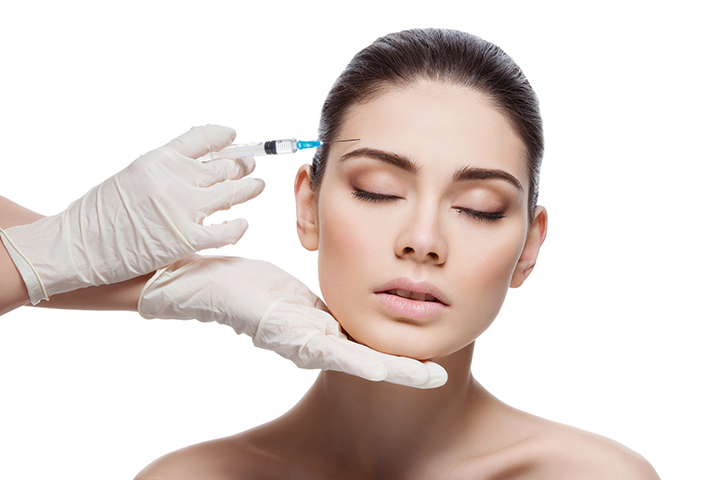
What actually happens during a treatment?
Prior to having any cosmetic injectable treatment you will have an extensive consultation with your doctor. This will involve a discussion about your medical history, medications, allergies and previous cosmetic treatments. A full facial assessment and examination will help to determine a treatment plan and your doctor will work with you to make a plan that best addresses your concerns. Once a plan is in place you may be provided with information regarding the treatments as well as costs.
Prior to the treatment the risks and benefits will be explained and you will be asked to sign consent forms. The skin is then cleaned and pre-treatment photographs are taken. The actual treatment of dermal fillers and anti-wrinkle injections is very straight forward with most treatments taking between 15 and 30 minutes. In some cases local anesthetic cream or injections may be used to help with pain relief. The injections are not particularly painful and many patients are able to return to work following these procedures.
After treatments the doctor will go through all of your aftercare instructions such as applying ice to the treatment area, rest and avoidance of certain activities such as heavy exercise and drinking alcohol.
Who are potential candidates for both?
Most people who are concerned about the ageing process and interested in preserving and enhancing their skin are good candidates for these procedures. Younger women and men in their mid-20s may find they want treatments to delay the onset of wrinkles by using Botox as a ‘preventative treatment’. They may also want to treat the early signs of ageing such as decreased fat in the cheeks and also sculpt and beautify their features with dermal fillers. Older patients may require treatments to soften existing static wrinkles, lift sagging skin and support to their cheeks and jaw lines with combination treatments. Any healthy individual without any absolute contraindications who has realistic expectations is a candidate for these treatments.
Is there a minimum age when it comes to injectables?
There are strict medical guidelines surrounding the minimum age for cosmetic surgery in Australia. However despite cosmetic injectables being considered ‘minor’ when compared with surgical procedures there are still regulations doctors must abide by. The doctor must determine that the patient has the capacity to consent to the procedure in addition to regarding the views of the parent or guardian and if they agree or approve of the procedure. For those under the age of 18 there must be a cooling off period of 7 days minimum between the informed consent and the procedure being performed. The patient should be encouraged to discuss why they want to have the procedure with their general practitioner during the cooling off period.
However you will find that the majority of cosmetic doctors will not treat those under the age of 18 regardless. Simply due to ethical reasons and the lack of indications behind young people needing cosmetic enhancement. Many doctors will also refer younger patients who present to them wishing to have cosmetic injectables for evaluation by a psychologist of their general practitioner to assess any underlying psychological causes for them seeking cosmetic enhancement.
Is it just for women?
Most certainly not. We are seeing increasing number of men seeking cosmetic injectables, the ‘brotox’ boom has certainly arrived. Men are seeking wrinkle injections as preventative treatments, dermal fillers for volume loss and other cosmetic treatments such as laser and fat dissolving. In skillful hands cosmetic injectables do not have to be feminising and can in fact help to masculinise features by softening harsh frown lines and sculpting the jawline and chin. We are seeing men from all walks of life seeking cosmetic treatments. From the executive wishing to soften his expressions for meetings and decrease embarrassing sweating through Botox injections, to the younger man wishing to look manlier with a chiseled jawline with dermal fillers.
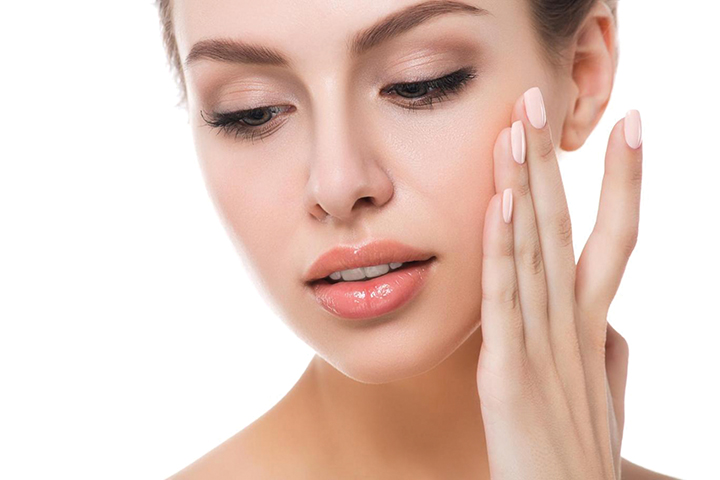
Are there areas of the face that cannot be effectively treated with injectables?
Generally injectables are safe and effective in most areas of the face. From adding structure and shape to the jaw, chin, nose and cheeks, to revolumising areas of lost fat, to softening dynamic wrinkles. However, they only form part of a complete skin rejuvenation plan. Focusing on just injectables will not give as natural nor long lasting result as focusing on skin health and maintenance with other means. I would strongly recommend investing in high quality cosmeceutical skin care consisting of a vitamin A, B and C as well as daily broad spectrum SPF and antioxidants to counter the damaging (and ageing) effects of sun exposure. In addition, combining injectables with skin treatment such as IPL/BBL, chemical peels, LED and laser treatments will enhance the results of injectables, promote natural collagen and elastin production and repair damaged skin. It is about a multifactorial approach to skin health and anti-ageing.
How can I make sure I don’t look like I’ve had ‘work done’?
Working closely with your cosmetic doctor about your concerns and desired results is important to ensure natural looking results. A skilled practitioner will not inject a 20 year old the same way as a 50 year old, for example in younger patients we often focus on enhancing natural beauty and contouring the features compared with an older patient where the focus is on adding support and improving skin quality. It is also up to the practitioner to advise when to stop and when to look at other treatment options. Less is often more in the case of wrinkle relaxers and dermal fillers. It is best to do small, regular maintenance treatments than a complete overhaul in one session.
How can people ensure the clinic or practice they are visiting can administer effective and safe treatment with injectables?
The difficult thing in Australia is the lack of regulation of the cosmetic industry. Although doctors are required to provide the prescription for wrinkle relaxers and dermal fillers there are increasing numbers of unskilled and untrained practitioners (doctors and nurses) who take advantage of the lack of regulation for monetary gain. Despite the presence of guidelines around advertising of cosmetic treatments and their safe administration the lack of regulations means seeking a qualified and skilled practitioner is unfortunately up to the patient.
I would ensure each and every patient research the clinic and practitioner prior to making a consultation. From asking friends and family, researching reviews online, ensuring the clinic has an active and ethical social media presence, to asking what the doctors qualifications are. I would strongly advise patients to only visit a full time cosmetic physician who is a member of an affiliated college and is committed to ongoing education and advancement in the industry. Always ensure the clinic offers a full consultation with a doctor (not a nurse) prior to any treatment and that there is no pressure to have treatment on the same day. A high quality cosmetic clinic will offer value and not compromise on results nor price. At the end of the day, go with your gut instinct. If it seems too good to be true then it probably is.
Visit youthlab.com.au for more!


